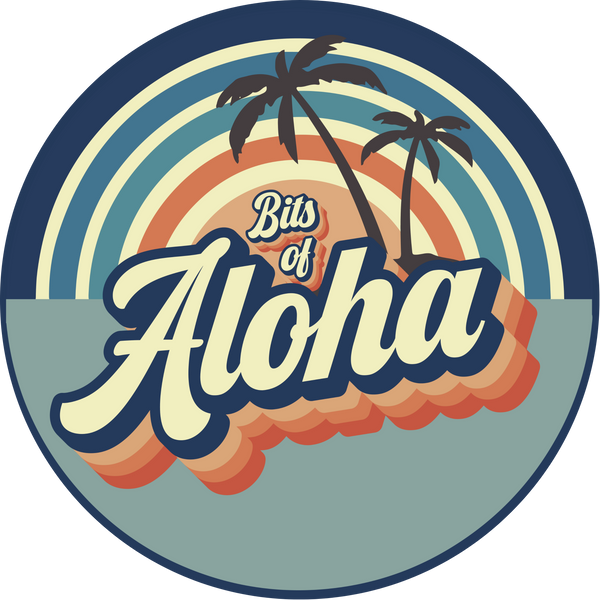Hanalei History: Kauaʻi’s Iconic Pier & Timeless Charm
Share
The History of Hanalei, Kauaʻi: From Ancient Roots to Its Iconic Pier
Set against lush mountains and a crescent-shaped bay, Hanalei is one of Kauaʻi’s most beloved towns, a place where old Hawaiʻi seems to live on. With its laid-back charm, rolling taro fields, and the famous Hanalei Pier stretching out over turquoise waters, Hanalei is a living snapshot of Hawaiʻi’s layered history.
From its early Native Hawaiian settlement days to its plantation-era growth, and then its place in the modern tourism scene, Hanalei has a fascinating story worth exploring. Here’s a closer look at the origins of Hanalei, the legacy of its famous pier, and some lesser-known facts about this magical corner of the Garden Isle.
Hanalei’s Ancient Roots
Long before tourists arrived to marvel at Hanalei’s beauty, Native Hawaiians were thriving in this lush river valley. The name “Hanalei” can be translated as “lei-making bay” or “crescent bay,” a reference to both its shape and to traditional lei practices.
The fertile Hanalei Valley, nourished by abundant rainfall and the Hanalei River, has been a center of Hawaiian agriculture for centuries. Native Hawaiians established extensive loʻi kalo (taro patches), developing complex irrigation systems that turned the entire valley into a breadbasket of poi and other staple foods.
These taro fields are still visible today, making Hanalei one of the few places where traditional taro farming remains actively practiced on a significant scale.
Missionaries and Sugar in Hanalei
In the 1830s, Western missionaries arrived on Kauaʻi and settled in Hanalei, building churches and schools. The Waiʻoli Huiʻia Church, dating to 1834, stands as one of the most notable missionary landmarks, with its picturesque green spire a familiar Hanalei sight.
By the mid-1800s, sugar entrepreneurs began cultivating plantations around Hanalei, capitalizing on its fertile land and river access. Hanalei Plantation, founded in the 1860s, produced sugar for nearly four decades before failing due to flooding and transportation challenges.
Unlike other parts of Hawaiʻi where sugar came to dominate the landscape, Hanalei’s agriculture largely reverted to taro and small farming after the sugar decline, preserving its traditional agricultural identity.
Building the Iconic Hanalei Pier
The sugar era nonetheless left an indelible mark on Hanalei — especially with the construction of the Hanalei Pier, one of the town’s most beloved landmarks today.
Originally built of wood in 1892, the pier was meant to support the transport of sugar and other goods across Hanalei Bay to ships anchored offshore. Before roads linked Hanalei to the rest of the island, the pier was essential for commerce, helping farmers get their products to market.
The pier was extended to 340 feet in 1912 and eventually reconstructed in concrete during the 1920s, creating the structure we see today. Over time, its role shifted from a working sugar port to a community gathering spot and fishing hub.
In 1979, the Hanalei Pier was added to the National Register of Historic Places, preserving it as a cultural landmark. After suffering damage during storms, it was fully restored in 2013 thanks to a partnership of local community groups and state agencies.
Hanalei in the Modern Era
By the mid-20th century, Hanalei began attracting artists, surfers, and travelers enchanted by its unspoiled natural beauty. Its curved bay, backed by the majestic green cliffs of Hāʻena and Mount Namolokama, became a poster image of “old Hawaiʻi” for photographers and filmmakers.
Hanalei Bay grew into a world-class surf destination, with its mellow summer waves ideal for beginners and massive winter swells drawing seasoned surfers. Meanwhile, the pier evolved into a beloved recreation spot where kids jump off the deck, families picnic, and fishermen cast lines.
The 1958 movie South Pacific, filmed partially in Hanalei, helped launch the town’s tourism presence. Despite growing visitor numbers, Hanalei has carefully managed to protect its local character. The community limits development and prioritizes local farms, cultural heritage, and natural resources.
Today, Hanalei remains a stronghold of community pride — a place where multi-generational fishing and farming families live alongside artists, watermen, and eco-minded residents.
Fascinating Facts About Hanalei
1. Legendary Flooding
Hanalei’s location on a wide river valley makes it prone to flooding. In 2018, massive rains devastated the town, cutting off access for weeks. Community volunteers quickly rallied to repair homes and help farmers recover.
2. Surfing Traditions
Hanalei’s gentle summer surf makes it one of the best beginner spots on the island, while its winter surf can grow powerful enough to challenge even pros.
3. Waiʻoli Mission House
This restored missionary home near Waiʻoli Church dates to 1837 and is a perfect window into 19th-century missionary life on Kauaʻi.
4. Hanalei National Wildlife Refuge
This federally protected refuge covers over 900 acres of wetlands and taro fields, providing critical habitat for endangered Hawaiian waterbirds like the ʻalae keʻokeʻo (Hawaiian coot).
5. Pier Paddling Races
The Hanalei Pier remains a community gathering place and hosts outrigger canoe regattas and other paddling races, keeping ocean traditions alive.
Hanalei Today: A Balanced Future
As of 2025, Hanalei balances a thriving visitor economy with deep local traditions. Taro farming still thrives in the valley, with many farmers passing down techniques through generations. Community groups continue to steward the Hanalei Pier, ensuring it stays safe and accessible.
Eco-tourism and cultural education play growing roles, as residents seek to teach visitors about Hanalei’s delicate environment and heritage. Walking tours, taro farm visits, and cultural workshops are increasingly popular ways to support the community while learning about its rich history.
For many, the view from Hanalei Pier says it all: shimmering ocean, lush green cliffs, surfers dancing on the waves, and kids laughing on the sand. It’s a timeless snapshot of what makes Kauaʻi so special — a place where aloha, culture, and history all flow together like the Hanalei River to the sea.
